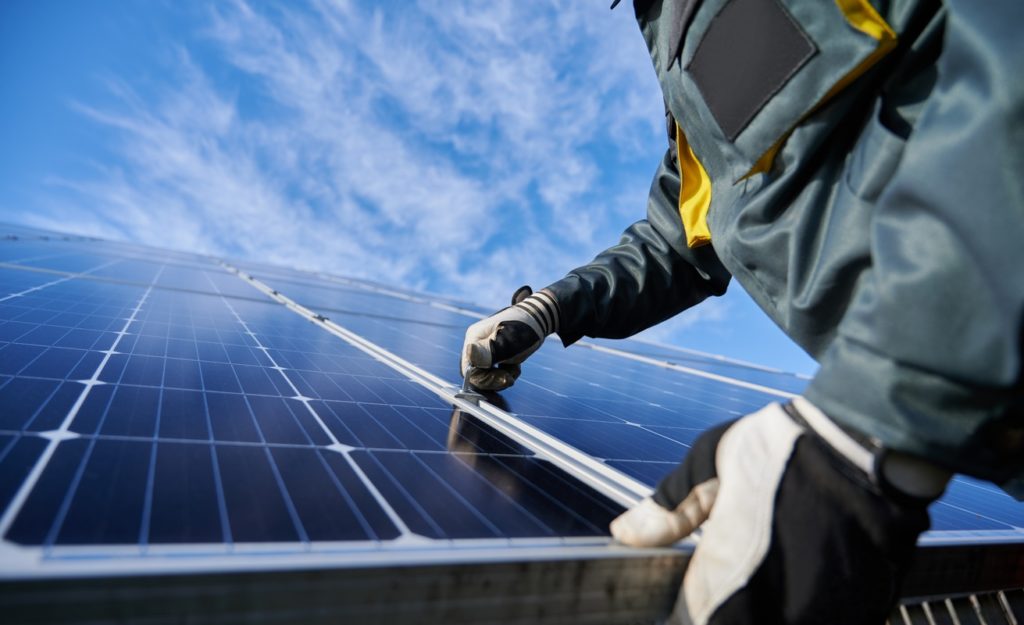Solar panel installation is a crucial step toward embracing renewable energy and reducing your carbon footprint. As concerns about climate change and energy costs continue to grow, many homeowners are turning to solar energy as a sustainable alternative. Solar panels convert sunlight into electricity, allowing you to harness the sun’s power for your energy needs. This article will guide you through the process of solar panel installation, including its benefits, key considerations, and tips for a successful transition.
The demand for solar energy has surged in recent years, driven by technological advancements, financial incentives, and increasing awareness of environmental issues. As a result, more homeowners are exploring solar panel installation as a viable solution for their energy needs. Understanding the intricacies of the installation process is essential to make informed decisions and ensure a successful outcome.
Benefits of Solar Panel Installation
- Cost Savings: One of the most significant advantages of solar panel installation is the potential for long-term cost savings. Once installed, solar panels can significantly reduce or even eliminate your electricity bills. Depending on your location and the size of your system, you can expect substantial savings over time.
- Environmental Impact: Solar energy is a clean, renewable resource. By installing solar panels, you contribute to reducing greenhouse gas emissions and dependence on fossil fuels. This environmentally friendly approach helps combat climate change and promotes a sustainable future.
- Increased Home Value: Homes with solar panel installations often have higher property values. Potential buyers are increasingly looking for energy-efficient homes, and having solar panels can make your property more attractive in the real estate market.
- Energy Independence: By generating your electricity, you reduce your dependence on the grid and utility companies. This independence protects you from rising energy costs and outages, providing greater control over your energy consumption.
- Incentives and Rebates: Many governments offer financial incentives, tax credits, and rebates for solar panel installation. These programs can significantly offset the initial costs and make solar energy more accessible to homeowners.
Understanding the Installation Process
The solar panel installation process can be broken down into several key steps:
- Assessment and Planning: The first step is to assess your home’s suitability for solar panels for your home. Factors to consider include your roof’s orientation, shading from trees or buildings, and available space. A professional installer can conduct a site assessment to determine the best approach for your installation.
- System Design: Once your home is assessed, the next step involves designing a solar system tailored to your energy needs. This includes calculating the number of panels required, their placement, and the type of solar technology to be used (e.g., monocrystalline, polycrystalline, or thin-film).
- Permits and Approvals: Before installation begins, you must obtain the necessary permits and approvals from local authorities. This step ensures compliance with building codes and regulations. Your solar installer can assist you in navigating this process.
- Installation: The actual installation typically takes one to three days, depending on the system’s complexity and size. During this process, the solar panels will be mounted on your roof or installed on the ground, connected to an inverter, and integrated with your home’s electrical system.
- Inspection and Interconnection: After installation, the system will undergo an inspection by local authorities to ensure it meets safety standards. Once approved, your system can be interconnected with the grid, allowing you to start generating electricity.
- Monitoring and Maintenance: After installation, it’s essential to monitor your system’s performance regularly. Most solar systems come with monitoring software that allows you to track energy production. While solar panels require minimal maintenance, occasional cleaning and inspections are recommended to ensure optimal performance.
Choosing a Solar Installer
Selecting the right solar panel installer is crucial for a successful installation. Here are some tips to help you choose a reputable installer:
- Research Credentials: Look for installers with proper certifications and licenses. They should be accredited by organizations such as the North American Board of Certified Energy Practitioners (NABCEP) or equivalent local bodies.
- Experience and Reputation: Choose an installer with a proven track record in solar panel installation. Read reviews, ask for references, and check their portfolio to gauge their experience.
- Warranty and Support: A reputable installer should offer warranties on both the solar panels and the installation work. Additionally, ensure they provide reliable customer support for any future questions or concerns.
- Get Multiple Quotes: Don’t settle for the first quote you receive. Obtain estimates from multiple installers to compare pricing, services, and warranties. This will help you make an informed decision.
- Check Financing Options: Many installers offer financing options to help make solar panel installation more affordable. Explore different financing models, such as leases, power purchase agreements (PPAs), and loans.
Conclusion: Making the Switch to Solar Energy
Solar panel installation represents a significant step toward a more sustainable and cost-effective energy future. With numerous benefits, including cost savings, environmental impact, and increased property value, solar energy is an attractive option for homeowners. By understanding the installation process and choosing a reputable installer, you can ensure a smooth transition to solar energy.




